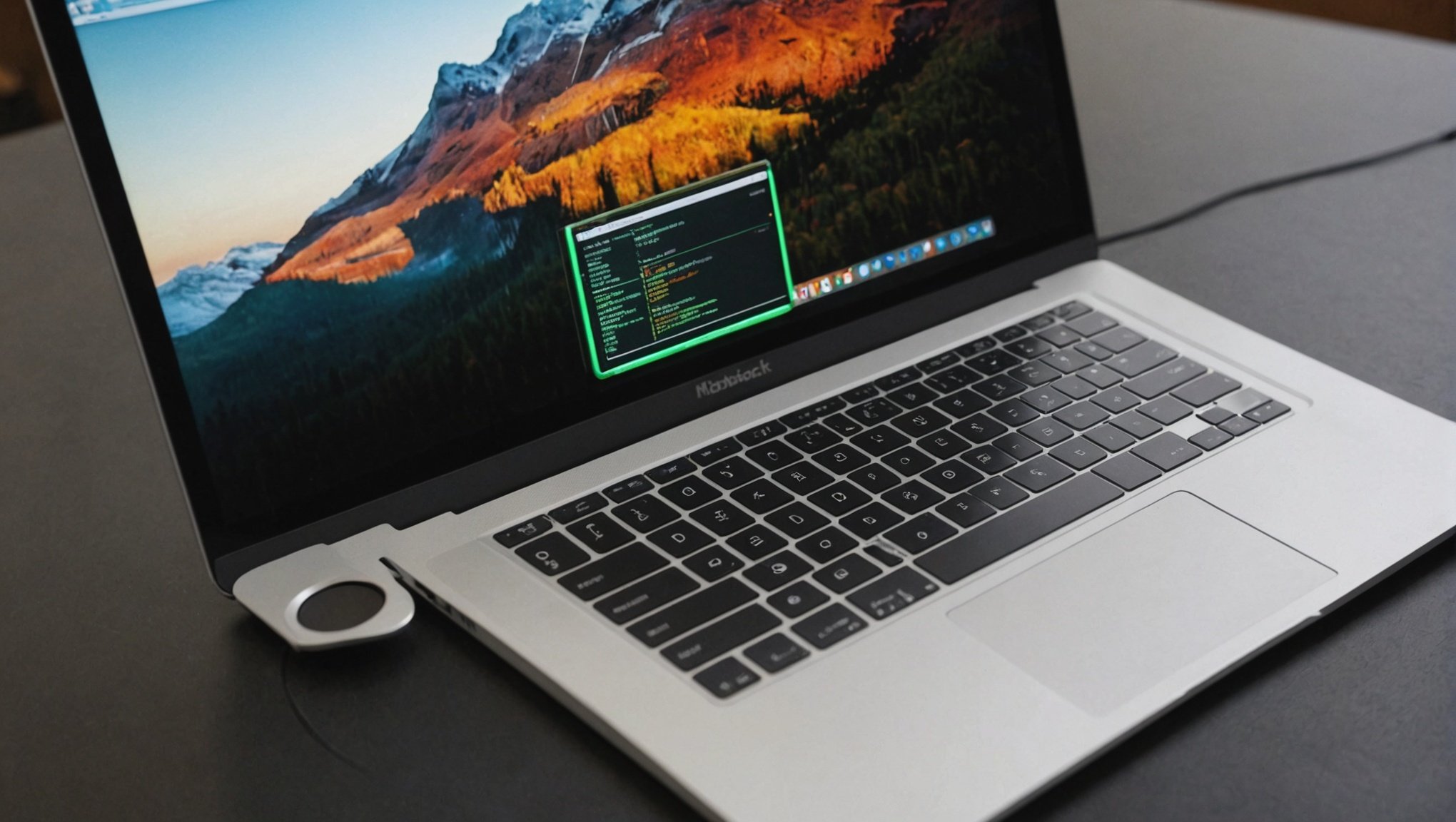In today’s rapidly evolving technology landscape, the MacBook Air remains one of the most popular and versatile laptops on the market. However, its built-in graphics capabilities can sometimes fall short, especially for those needing high-end graphics performance for tasks such as video editing, gaming, or 3D rendering. The good news is that an external GPU (eGPU) can significantly enhance your MacBook Air’s graphics performance. This article will guide you through the detailed steps to install and configure an external GPU on your MacBook Air, ensuring you can tap into the full potential of your laptop.
Understanding the Benefits of an External GPU
Before diving into the installation process, it’s crucial to understand what an external GPU is and why it can be beneficial. An eGPU is essentially a desktop-class GPU housed in an external enclosure that connects to your MacBook Air via Thunderbolt 3. This setup allows you to enjoy high-performance graphics without the need for a desktop computer.
In parallel : How to establish an efficient home automation system using a Google Nest Hub and multiple smart devices?
Enhanced Graphics Performance
An external GPU can dramatically improve your MacBook Air’s ability to handle graphically intensive tasks. Whether it’s gaming, video editing, or running complex scientific applications, an eGPU can provide the necessary power to execute these tasks smoothly and efficiently.
Improved Work Efficiency
For professionals, an eGPU can significantly boost productivity. Video editors can render videos faster, graphic designers can work with higher resolution images without lag, and gamers can enjoy high frame rates. This enhanced performance translates to smoother workflows and less downtime.
Have you seen this : How to configure an ASUS ZenWiFi AX mesh system for seamless coverage in a multi-story house?
Longevity and Future-Proofing
Investing in an eGPU can extend the life of your MacBook Air. As software and applications become more demanding, having an external GPU ensures that your laptop can keep up with these changes. This future-proofs your investment and saves you from needing to upgrade your entire system.
Preparing Your MacBook Air for an eGPU
Before you rush out to purchase an external GPU, there are several preparatory steps you need to take to ensure compatibility and a smooth installation process.
Check Compatibility
The first and most crucial step is to ensure that your MacBook Air is compatible with an eGPU. Most MacBook Air models with Thunderbolt 3 ports support eGPUs. However, it’s always best to double-check Apple’s official list of supported Mac models to avoid any compatibility issues.
Update macOS
To get the most out of your eGPU, it’s essential to have the latest version of macOS installed. Apple continuously updates its OS to support new hardware and improve existing functionalities, including better eGPU support. Head to the Apple menu, select "System Preferences," then "Software Update," and install any available updates.
Choose the Right eGPU Enclosure and GPU
Selecting the right eGPU enclosure and GPU is crucial. The enclosure should support Thunderbolt 3 and be compatible with macOS. Popular choices include the Razer Core X, Sonnet eGFX Breakaway Box, and the Akitio Node. The GPU itself should also be compatible with macOS. AMD GPUs generally offer better compatibility with macOS than NVIDIA GPUs. Models like the RX 5700 XT, Vega 56, and RX 580 are excellent choices.
Installing the External GPU
Once you’ve prepared your MacBook Air and selected the appropriate eGPU enclosure and GPU, it’s time to proceed with the installation.
Step-by-Step Installation Guide
-
Assemble the eGPU Enclosure: Begin by unboxing your eGPU enclosure and GPU. Install the GPU into the enclosure by following the manufacturer’s instructions. This usually involves opening the enclosure, inserting the GPU into the PCIe slot, and securing it with screws.
-
Connect the eGPU to MacBook Air: After assembling the eGPU, connect it to your MacBook Air using a Thunderbolt 3 cable. Ensure the connection is secure and the eGPU is placed on a stable surface.
-
Power On the eGPU: Plug in the eGPU’s power supply and turn it on. Your MacBook Air should automatically recognize the device. If it doesn’t, restart your laptop.
-
Install Necessary Drivers: While macOS natively supports many GPUs, some may require additional drivers. Visit the GPU manufacturer’s website to download and install any necessary drivers. Follow the on-screen instructions to complete the installation.
-
Configure Display Settings: Once the eGPU is detected, you may need to configure your display settings. Go to "System Preferences," select "Displays," and set up your external monitor if you’re using one. This step ensures that your MacBook Air utilizes the eGPU for graphics processing.
Troubleshooting Common Issues
If you encounter any issues during the installation, here are some common problems and their solutions:
- eGPU Not Detected: Ensure the Thunderbolt 3 cable is securely connected and the eGPU is powered on. Restart your MacBook Air to refresh the connection.
- Driver Issues: Make sure you’ve installed the latest drivers from the GPU manufacturer’s website. Sometimes, uninstalling and reinstalling the drivers can resolve the issue.
- Display Problems: If your external monitor isn’t displaying correctly, check the cable connections and ensure the monitor is set to the correct input source.
Configuring Your MacBook Air to Utilize the eGPU
With the eGPU successfully installed, the next step is to configure your MacBook Air to make the most of the enhanced graphics performance.
Set Preferred GPU for Applications
One of the most significant benefits of an eGPU is the ability to select which applications utilize the enhanced graphics capabilities. Here’s how to set a preferred GPU for specific applications:
- Open Finder and navigate to the "Applications" folder.
- Right-click on the application you want to use the eGPU with and select "Get Info."
- In the "Get Info" window, check the box labeled "Prefer External GPU."
- Restart the application to ensure it utilizes the eGPU.
Optimizing Performance
To optimize performance, ensure that your MacBook Air is set to prioritize the eGPU for graphics-intensive tasks. You can do this by following these steps:
- Go to "System Preferences" and select "Energy Saver."
- Check the box labeled "Automatic graphics switching." This allows macOS to switch between integrated and external GPUs based on the workload.
- For better performance during gaming or rendering, consider using a cooling pad to keep your MacBook Air cool.
Monitoring eGPU Usage
Monitoring the eGPU’s usage can help you understand how it enhances your MacBook Air’s performance. Use Activity Monitor to track GPU usage:
- Open "Activity Monitor" from the "Applications" folder.
- Click on the "Window" menu and select "GPU History."
- This window displays real-time graphs showing GPU usage. These graphs can help you identify which applications are utilizing the eGPU.
Maintaining and Upgrading Your eGPU Setup
Once your eGPU is up and running, it’s essential to maintain and periodically upgrade your setup to ensure continued optimal performance.
Regular Maintenance
Like any other piece of hardware, your eGPU setup requires regular maintenance. Dust can accumulate inside the eGPU enclosure and GPU, which can lead to overheating and reduced performance. Periodically open the enclosure and clean the components using compressed air. Ensure that the fans are running smoothly and check the connections for any signs of wear and tear.
Software Updates
Keeping your macOS and eGPU drivers up to date is crucial for maintaining compatibility and performance. Regularly check for software updates in "System Preferences" and visit the GPU manufacturer’s website for the latest drivers. These updates often include performance improvements and bug fixes.
Future Upgrades
As technology advances, you may want to upgrade your GPU to meet new demands. The modular design of eGPU enclosures makes this process straightforward. Simply open the enclosure, remove the old GPU, and install the new one following the same steps as the initial installation. Ensure that the new GPU is compatible with macOS and your eGPU enclosure.
Installing and configuring an external GPU on your MacBook Air can significantly enhance its graphics performance, allowing you to tackle more demanding tasks with ease. By understanding the benefits of an eGPU, preparing your MacBook Air, following the step-by-step installation process, and configuring your system for optimal performance, you can unlock a new level of efficiency and capability.
Regular maintenance and staying up to date with software updates will ensure your eGPU setup remains in top condition. This investment not only boosts your current performance but also future-proofs your MacBook Air, extending its longevity and usefulness.
In summary, with the right preparation and understanding, you can seamlessly integrate an external GPU into your MacBook Air setup, transforming it into a powerful tool capable of handling the most intensive graphic demands. Happy upgrading!











